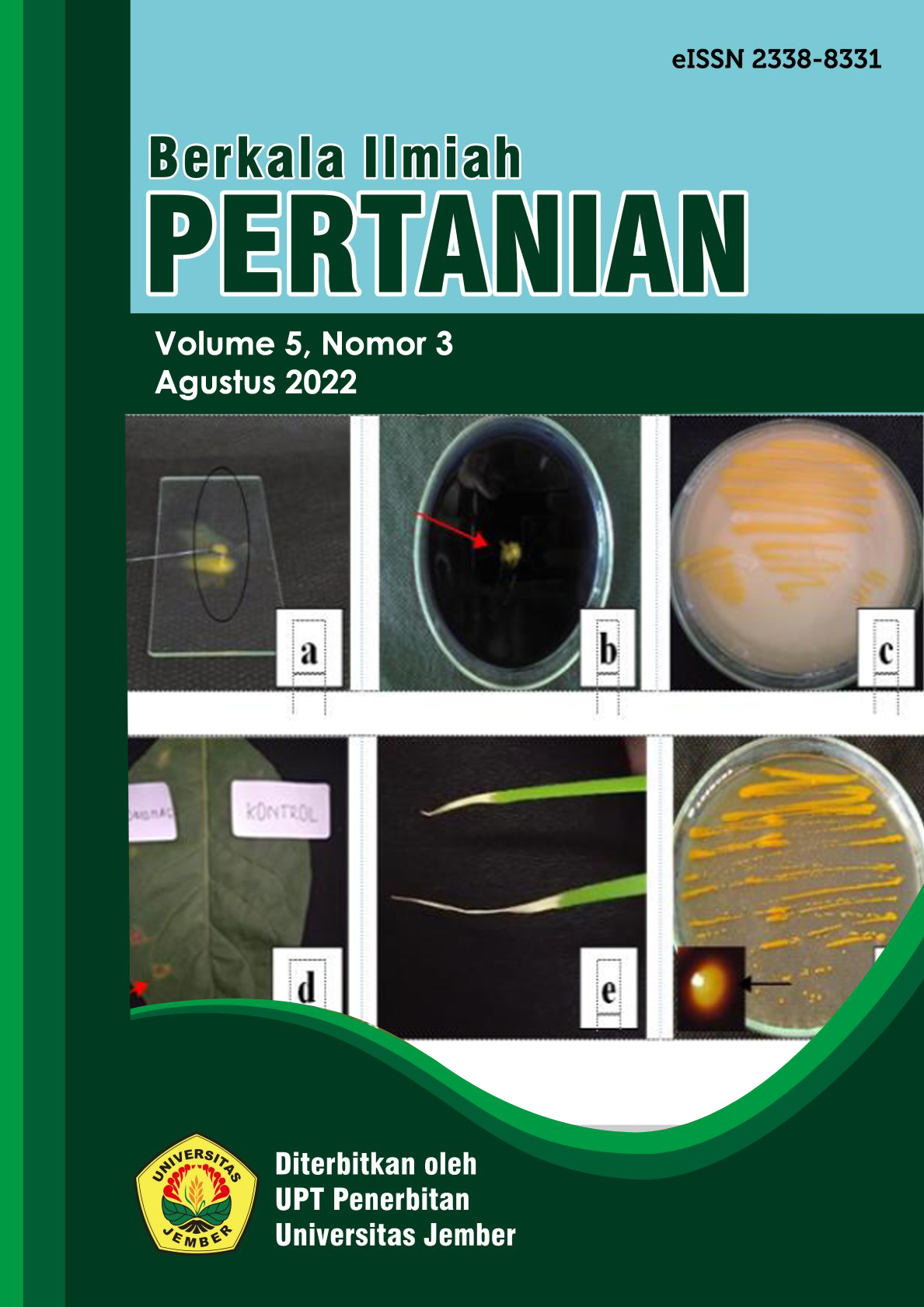Effects of Salicylic Acid to Control Bacterial Leaf Blight Disease (Xanthomonas oryzae pv. oryzae) on Three Varieties of Rice
DOI:
https://doi.org/10.19184/bip.v5i3.15349Abstract
ABSTRACT
Bacterial leaf blight is a disease in rice plants caused by Xanthomonas oryzae pv. oryzae. The use of resistant varieties is an effective, economic and easy way to do it, but it is limited by time and place so that it needs to be induced by the addition of salicylic acid. Salicylic acid is one of the compounds that can activate enzymes that play a role in plant resistance to pathogen infection. The purpose of this study was to determine the effect of the addition of salicylic acid to rice varieties to induce its resistance to bacterial leaf blight. The research was arranged in a factorial completely randomized design (CRD) consisting of 2 factors. The first factor used was mekongga rice varieties (V1); Ciherang (V2); and IPB 3S (V3), while the second factor is the concentration of salicylic acid consisting of 0 mM (K0); 7.5 mM (K1); 10 mM (K2); and 12.5 mM (K3) with each treatment repeated 3 times, and in each study unit there were 5 plants. Results showed that the addition of salicylic acid and the use of three varieties of rice can suppress the severity of the disease HDB, its resistance status increases when compared to control and increases the content of the phenol. The best treatment of 10 mM salicylic acid concentrations with Mekongga varieties (K2V2) can suppress the severity of the HDB disease by 18.47% by showing a moderately susceptible endurance status as well as the content of the phenol increased.
Keywords : Salicylic Acid, Varieties of Rice, Xanthomonas oryzae pv. oryzae
Downloads
Downloads
Published
Issue
Section
License
Authors who publish with this journal agree to the following terms:
1.Authors retain copyright and grant the journal right of first publication with the work simultaneously licensed under a Creative Commons Attribution-NonCommercial 4.0 International License that allows others to share the work with an acknowledgement of the work's authorship and initial publication in this journal.
2.Authors are able to enter into separate, additional contractual arrangements for the non-exclusive distribution of the journal's published version of the work (e.g., post it to an institutional repository or publish it in a book), with an acknowledgement of its initial publication in this journal.
3.Authors are permitted and encouraged to post their work online (e.g., in institutional repositories or on their website) prior to and during the submission process, as it can lead to productive exchanges, as well as earlier and greater citation of published work (See The Effect of Open Access).



















